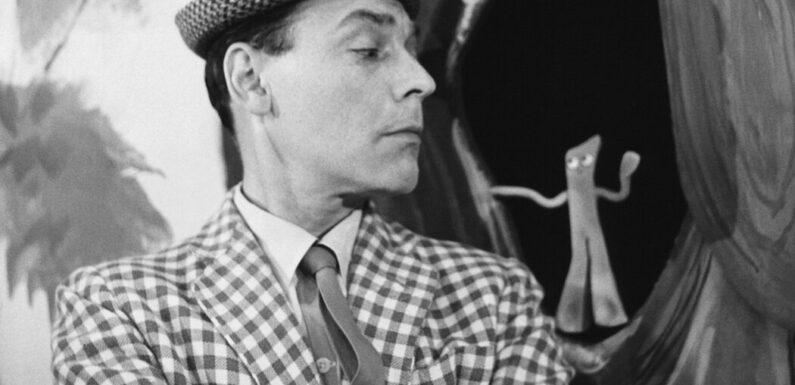
Origin stories are notoriously hard to pin down in the humor business, since only the creator knows where the joke began. Lineages, on the other hand, are a lot easier to trace. The comedian Paul Reubens, a.k.a. Pee-wee Herman, who died this week of cancer at 70, belongs to a long line of American comics stretching back to the golden age of television and, beyond it, to the early days of vaudeville and burlesque.
Though Pinky Lee is an unfamiliar name today, it would not have been to a man of Mr. Reubens’s generation. As a baby boomer, he would surely have grown up on the televised antics of a comedian famed for many of the same tics, bits and gimmicks that Mr. Reubens would later adopt — beginning with an absurdist stage name.
Pee-wee Herman was born Paul Rubenfeld in 1952 in Peekskill, NY; Mr. Lee was born Pincus Leff in 1907 in Saint Paul, Minn. Rubenfeld, who was a talented child actor, would rename himself Reubens and become an improv comic. His early work with the The Groundlings in Los Angeles, notably in a Pinky parody skit, would eventually form the basis for one of the more indelible characters in show business. Mr. Lee came up through the ranks as a tap dancer on the vaudeville circuit. After turning to comedy routines, he made a tidy if minor career for himself as a supporting player in films like “Lady of Burlesque” (a nutty 1943 mystery that centers on a G-string as a murder weapon). He also starred in a series of westerns with Roy Rogers and Dale Evans, including the eminently forgettable “South of Caliente” (1951), in which Lee took fourth billing, beneath the screen cowboy’s palomino, Trigger.
So much of what we think of as uniquely Pee-wee Herman can be readily traced to Pinky Lee: There was the shrunken child’s-size hat his character wore, the rapid-fire way of talking. There were also his goofy, mincing soft-shoe dances, his trademark lisp. And there was a signature catchphrase — a version of the slowburn comeback echoing in the mind of every subteen.
“Oooooh! You make me so mad!” Pinky Lee would say.
“I know you are, but what am I?” was the Pee-wee Herman version.
A forerunner of “Pee-wee’s Playhouse,” “The Pinky Lee Show” ran during the 1950s before “The Howdy Doody Show,” a top-rated afterschool television program starring a gaptoothed, flame-haired and rubber-faced ventriloquist’s dummy.
“Yoo-hoo, it’s me,” went the opening theme song Mr. Lee performed (sang is not quite the word): “I skip and run and bring lots of fun/To every she and he/It’s plain to see that you can tell it’s me/In my checkered hat and my checkered coat.”
And then there was the outfit.
Pinky Lee slicked down his hair and wore mismatched checkered shirts and jackets; baggy pegged trousers; a neatly knotted four-in-hand necktie; and a permanently supercilious expression.
Mr. Reubens as Pee-wee Herman pomaded his hair, wore a suit, albeit with shrunken proportions (the jacket too snug, the pants hemmed to floodwater height, the neckwear a fussy bow-tie), and had a permanently supercilious expression. The air of disbelief, the prissily crossed told-you-so arms, even the moue that Mr. Reubens affected were all, it would appear, studiously adapted. As Pee-wee later would in his television comedy, Pinky delighted in playing opposite inanimate objects, among them the lovable, bendable humanoid Claymation character Gumby.
And so it seems only just, as Instagram and the rest of the internet mourns Mr. Reubens’s Pee-wee, to give a tip of the shrunken, roll-brimmed pork pie to his progenitor, Mr. Leff’s Pinky.
Source: Read Full Article